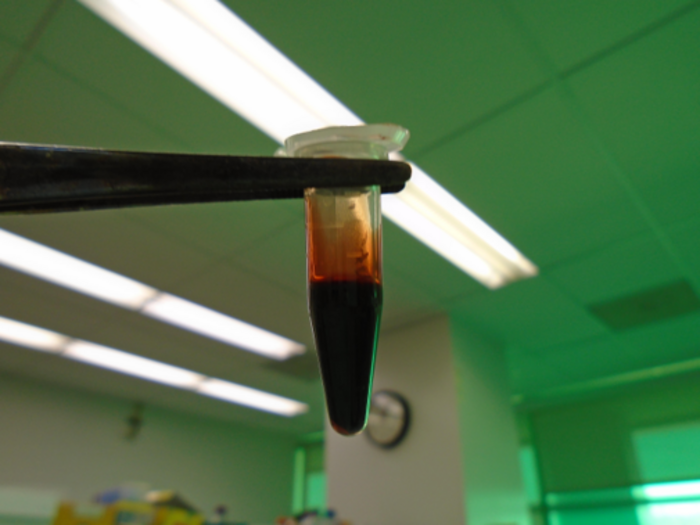Rocketry, aviation, and shipping are powered by energy-dense fossil fuels that are hard to replace. Researchers headed by a team at the Lawrence Berkeley Lab and the Technical University Denmark now report that they have discovered a way to generate an alternative biofuel that can replace rocket and jet fuels, by harvesting an unusual carbon molecule produced by the metabolic process of bacteria commonly found in soil.
“If we can make this fuel with biology there’s no excuse to make it with oil,” said Pablo Cruz-Morales, PhD, a microbiologist at DTU Biosustain, part of the Technical University of Denmark. “It opens the possibility of making it sustainable.”
Cruz-Morales is lead author of the team’s published paper in Joule, which is titled, “Biosynthesis of polycyclopropanated high energy biofuels.” In their paper, the researchers concluded, “Our work shows that production of hydrocarbon fuels with superior properties to current high energy fossil fuels is possible using biological production, and they should be excellent alternatives for modes of transportation for which renewable fuels are sorely needed.”
Easing the global economy from dependence on petroleum is key to slowing down the pace of climate change, the authors wrote. Advances in agriculture and biotechnology have enabled large-scale production of ethanol and biodiesel, both of which are viable replacements for some fossil fuels. However, replacing fossil fuels that are required for some applications is more challenging. “Energy-demanding applications like rocketry, aviation, and shipping are fueled with petroleum-derived hydrocarbons that are difficult to replace,” the team continued. “These applications require high power and energy-to-weight ratios and, as a result, rely on energy-dense fuels… These fuels are rich in cyclic molecules with strained bond angles allowing them to store more energy than non-cyclic molecules.” However, as the scientists also noted, while the highest amount of energy can be stored in cyclopropanes, these molecules are hard to produce via organic synthesis.
In cyclic alkanes—such as those used in aerospace applications—and where the C–C bonds form angles other than 109.5 degrees—the straining of the bonds causes an increase in the fuels’ net heat of combustion. So when petroleum jet fuel is ignited, it releases a tremendous amount of energy. The scientists at the Keasling Lab at the Lawrence Berkeley Laboratory thought there must be a way to replicate this without waiting millions of years for new fossil fuels to form. Jay Keasling, PhD, a chemical engineer at the University of California, Berkeley, approached Cruz-Morales, who was a postdoc in his lab at the time, to see if he could synthesize a tricky molecule that has the potential to produce a lot of energy. “Keasling told me: it’s gonna be an explosive idea,” said Cruz-Morales.
The molecule that Keasling wanted to recreate was called jawsamycin—named after the movie “Jaws” because of its bite-like indentations—and is created by the common bacteria streptomyces, an organism that Cruz-Morales had worked with in the past.
“The recipe already exists in nature,” said Cruz-Morales. The jagged molecule is produced by native metabolism of the bacteria, using glucose as a source. “As they eat sugar or amino acids, they break them down and convert them into building blocks for carbon-to-carbon bonds,” he said. “You make fat in your body in the same way, with the same chemistry, but this bacterial process has some very interesting twists.”
These twists, which give the molecules their explosive properties, are the incorporation of cyclopropane rings—rings of three carbon atoms arranged in a triangular shape. “If you have bonds that are at a normal angle, an open chain of carbons, the carbons can be flexible and they get comfortable,” explained Cruz-Morales. “Let’s say you make them into a ring of six carbons—they can still move and dance a little bit. But the triangle shape makes the bonds bend, and that tension requires energy to make.”
After careful analysis, the team determined that the enzymes that were responsible for the construction of these high-energy cyclopropane molecules were polyketide synthases. “In chemistry, everything that requires energy to make will release energy when it’s broken,” explained Cruz-Morals. “Polyketide synthases are the ultimate biological tool to make organic chemistry.”

The fuel produced by the bacteria would work a lot like biodiesel. It would need to be treated so that it could ignite at a lower temperature than the temperature needed to burn a fatty acid, but when ignited, it would be powerful enough to send a rocket into space.
“Although the next step is to scale up their production until the process is commercially viable, the availability of a biobased production method opens the possibility to replace fossil fuels in a very constrained sector,” the investigators wrote. In the future, Cruz-Morales hopes that he and the team of Department of Energy researchers who worked on the project will be able to scale up this process so that their alternative fuel could actually be used in aircraft.
“The problem right now is that fossil fuels are subsidized,” said Cruz-Morales. “This is something that is not only related to the technology, but the geopolitical and socio-political constitution of the planet right now. You can see this as a preparation for the moment because we are going to run out of fossil fuels, and there’s going to be a point, not far from now, when we will need alternative solutions.”


